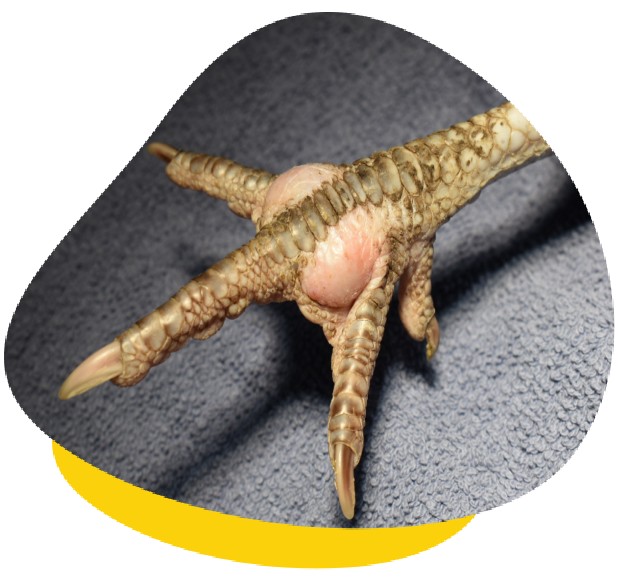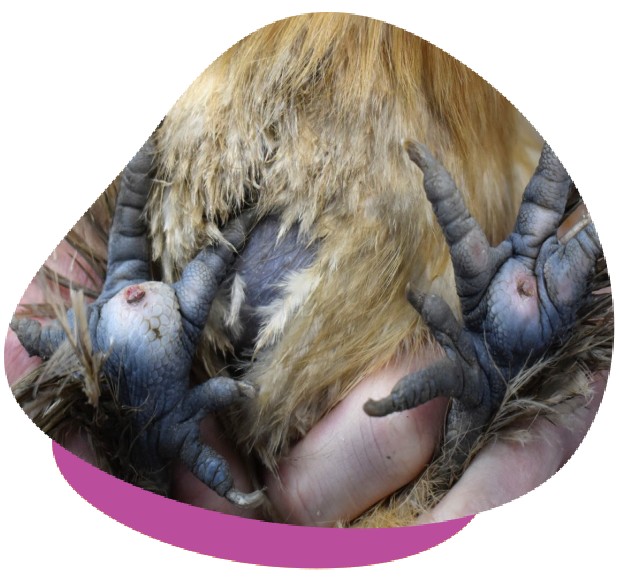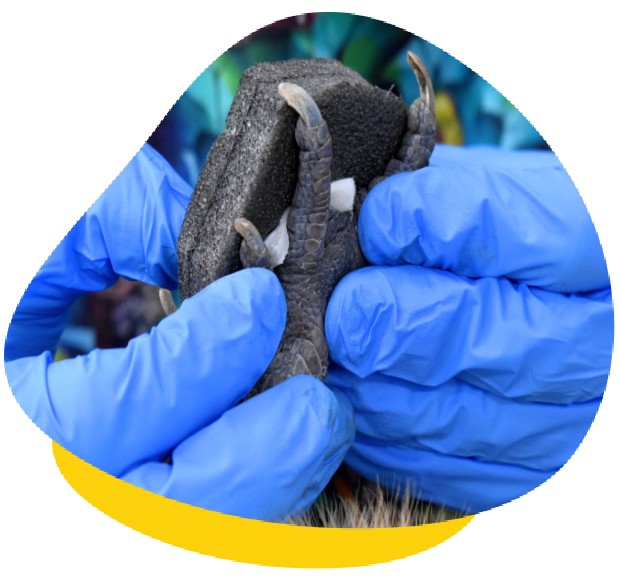What is Pododermatitis?
Pododermatitis, commonly referred to as “bumblefoot,” is an inflammatory condition affecting the bottom of a bird’s feet. This condition is prevalent among various bird species, including ducks, chickens, and parrots.
Pododermatitis, commonly referred to as “bumblefoot,” is an inflammatory condition affecting the bottom of a bird’s feet. This condition is prevalent among various bird species, including ducks, chickens, and parrots.

Early indications of pododermatitis include:
Pododermatitis results from a combination of factors, including:


The treatment approach for pododermatitis depends on the severity of the condition:
Preventing pododermatitis involves maintaining an optimal living environment and ensuring good health practices:
Focusing on these preventive measures and maintaining a vigilant approach to bird care can help ensure your feathered friends remain healthy and free from pododermatitis.
For more information on Pododermatitis, please contact your local Unusual Pet Vets team or book an appointment online.
